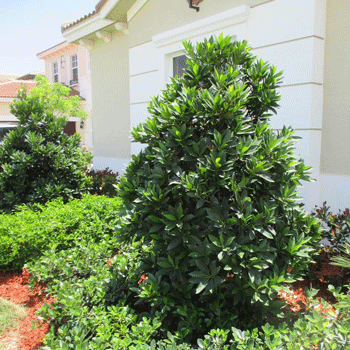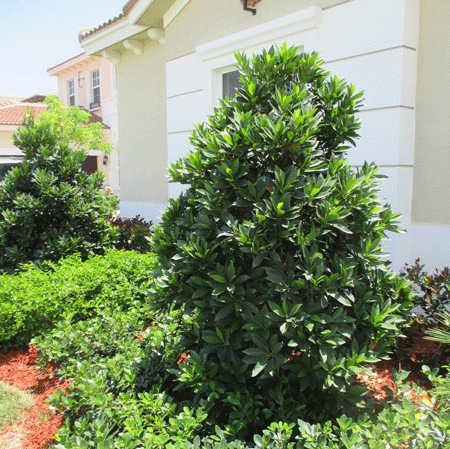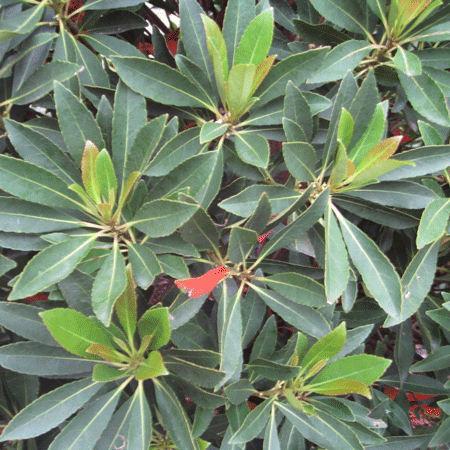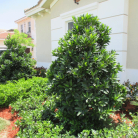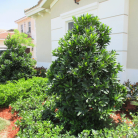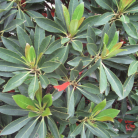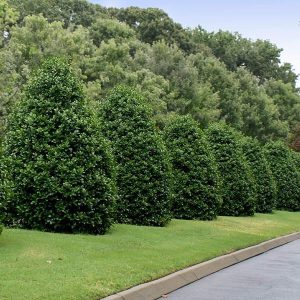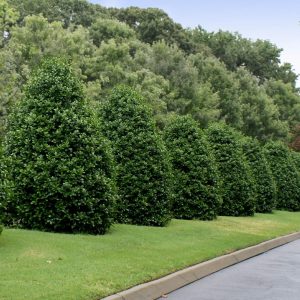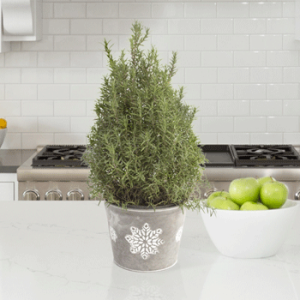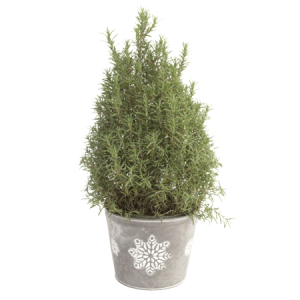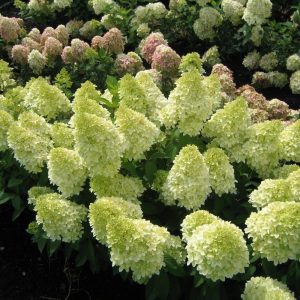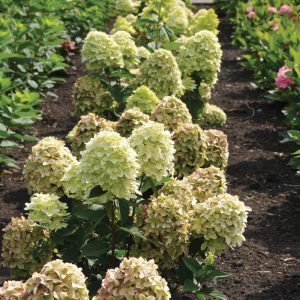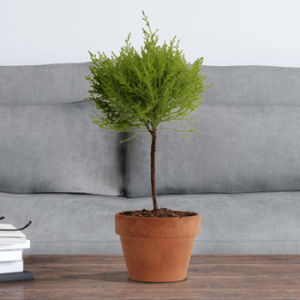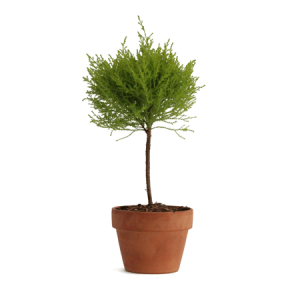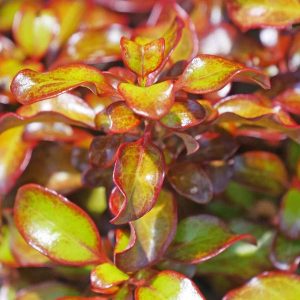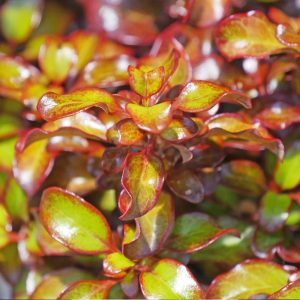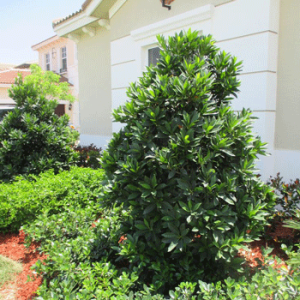Japanese Blueberry Tree on Sale
- Estimated Delivery : Up to 4 business days
- Free Shipping & Returns : On all orders over $200
How To Win The “Best Looking Yard” Award in Your Neighborhood
The Fastest Way to Add Charm to Your Landscape
Most blueberries emerge from bell-shaped flowers, but Japanese Blueberry flowers have dangling petals that resemble cream-colored, flowing grass skirts. You ll treasure the flowers as the warm weather coaxes them out of their buds in the late spring early summer, adding delicate decorations to your area. For an added treat, come to the branches and you ll smell the Japanese Blueberry tree s lovely fragrance that arouses the senses.
Why You’ll Love This Tree Year-Round
Japanese Blueberry trees are ornamental evergreens prized for their attractive foliage that makes a strong impression. Expect the blueberry tree to not only produce green, but bronze and bright red leaves that add flame-like dashes of color to its complexion. In fall, the branches flush reddish-orange, but don t worry— the tree won t go completely bare! Your yard will benefit from a delightful blueberry tree variety that s never dull and offers year-round color.
Another Perk for Living in the South
If you live in zones 8-11, you are fortunate to enjoy moderate temperatures throughout the year. Another benefit of southern living is the ability to grow the delightful Japanese Blueberry Tree!
This durable berry variety is Easy to Grow. Plant the young tree in moist, well-drained soil; water occasionally, and Viola! Your tree is set to thrive. The hardy, disease-resistant specimen is not fussy. Seaside dwellers can even withstand salty ocean spray!
So Many Uses ~ You’ll Want More Than One
Landscape architects love Japanese Blueberry trees because of their extensive landscaping potential. Grow the dense accent trees into a privacy screen where their height and lush growth will provide solitude for you and your family. They re also a great choice for an entryway decoration, a security hedge, a large corner lot tree, a beautiful backdrop or an anchor for a mixed bed! You ll agree with landscapers: it s hard not to like the versatile Japanese Blueberry because it can fulfill your exact needs. It seems like growers always have room for another Japanese Blueberry!
Fun to Prune. Just Choose Your Shape!
The Japanese Blueberry tree s tight branching pattern elevates upwards of 35 feet and the branches don t mind being pruned. Clip the Japanese Blueberry 2 or 3 times per year during warm weather and train it how you d like: a casual cone shape, a trunk with a dense cloud of leaves, a hedge… whatever your yard or garden needs. Look forward to a blueberry tree that comes ready to adapt to your space!
Proof That This is One Attractive Tree
Though its berries are inedible for humans, the Japanese Blueberry tree is a tried-and-true way to attract birds. In fact, the fruit of the Japanese Blueberry is a favorite treat of birds in the tree s native Asia and the South Pacific. Shaped like olives, the blue fruit becomes more plentiful as the tree matures. You ll love how the blueberries contrast with the tree s fall foliage as it attracts birds of all sorts and your space comes alive!
This tree will be tough to get soon so order now!
Planting & Care
Location: The Japanese blueberry tree, also called the “Elaeocarpus decipiens,” grows best in USDA plant hardiness zones 8 to 10. It is commonly grown as a single specimen. A slow-growing tree, it usually takes one to three years before the Japanese blueberry tree becomes established. During that time period, the tree requires regular watering and fertilizer applications to grow a healthy root system.
Planting Instructions: Plant the Japanese blueberry tree in a location that receives full sunlight. The tree grows in a compact fashion so can be placed within four feet of a structure. If you are planting the tree as an accent along a walkway or patio, space the tree at least 30 to 40 feet away.
Dig a hole at least twice the width of the tree’s root ball. Place the tree into the hole. Add organic material to the soil at a ratio of 50 percent hummus mixed with the soil. Place the mixture around the tree’s root system and tamp the soil down to remove air pockets.
The Japanese blueberry tree grows well in most soil types but prefers a soil pH of 6.6 to 7.8. Choose a planting location that is well-draining and where the tree’s roots are not continuously saturated with water.
Watering: Keep the soil around the Japanese blueberry tree moist but not overly wet for the first few years after planting. Once fully established, the Japanese blueberry tree is somewhat drought tolerant and will only require watering if there is an extended period of dry hot weather.
Fertilization: The Japanese blueberry tree benefits from an application of general purpose fertilizer in the early spring season before new growth emerges. Follow the instructions on the fertilizer’s label for application ratios.
Each growing season, place a two to three-inch layer of organic mulch material around the tree’s base to help add supplements to the soil. The mulch will also help control weed growth and aid the soil in retaining moisture.
Pruning: The Japanese blueberry tree tolerates pruning well in its youth to form an attractive shape. It can be pruned to maintain its natural growth or formed into a cone shape. Without pruning, the tree will slowly grow to a height of 60 feet. However, the tree can easily be sheared to any desired size. Prune the Japanese blueberry tree during the winter months when the tree is dormant.
Pests and Disease: An exceptionally hardy plant, the Japanese blueberry suffers from no known diseases or pests.
Frost Damage: The Japanese blueberry tree does not tolerate frost and damage may occur. Cover the plant with a blanket or sheet if a frost is forecast. If an unusual spring frost should occur, the tree may suffer tip damage or dieback. If damage does occur, prune away the areas
| Size | 3-4 ft., 3 Gallon, 4-5 ft., 5-6 ft. |
|---|
